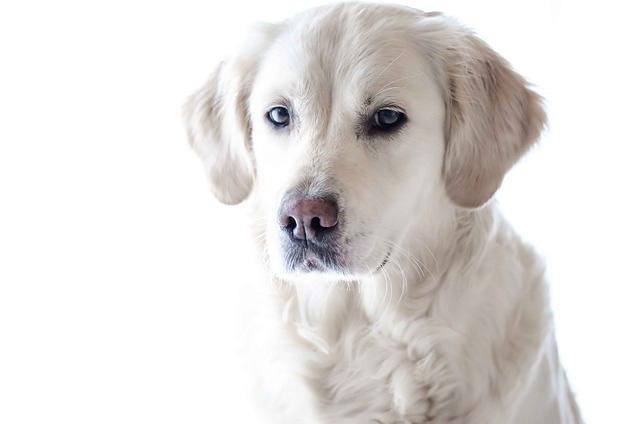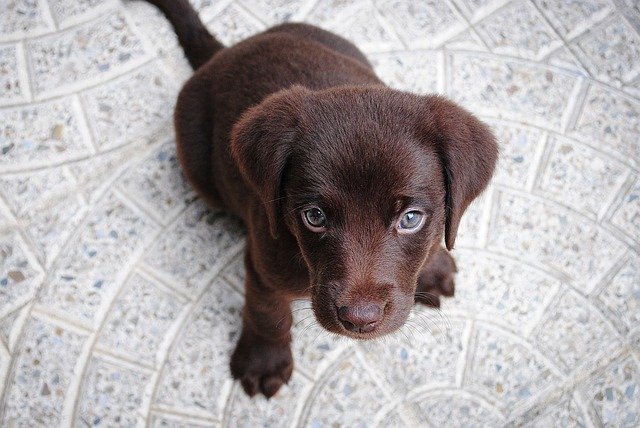What is the difference between a British Lab vs English Lab?
When people talk about the Labrador Retriever, they talk about a “British Lab” or an “English Lab,” but what is the difference between the two types?
The truth is that there is no difference between a British Lab and VS. English Lab at all!
So, if “British Lab” and “English Lab” both refer to the same thing, what about an “American Lab,” a “bench lab,” a “show Lab,” and a “field Lab”?
And how do these compare to the British or English Lab? If you are confused, do not worry, you are not the only one!
Today we are going to clear things up for you.
The Different Types of Labradors
When it comes down to it, there are two “types” of Labrador Retriever, distinguishable by their physical characteristics.
These two “types” of Labrador Retriever are usually referred to as the “British Lab” and the “American Lab” by laypeople and as the “Field Lab” and the “Bench Lab” in professional circles.
Despite looking physically different, the Field and Bench Labrador Retriever share the same Labrador Retriever genetic building blocks because there is only one Labrador Retriever breed.
The British vs English Lab
When people refer to the British or English Labrador, they are talking about a Labrador Retriever that stands between 21.5 and 22.5 inches tall. A female British Labrador weighs 55lbs, and the male can weigh between 70 and 74lbs.
The British or English Lab looks stockier than the American Lab. This Lab has a blockier head shape, a deeper and broader chest, shorter legs, and a shorter muzzle.
The American Lab
When people refer to the American Labrador, they are talking about a Labrador Retriever that stands between 22.5 and 24.5 inches tall.
A female American Labrador weighs between 55 and 75lbs, and a male can weigh between 65 and 85lbs.
The American Lab looks lankier than the British Lab.
This Lab has a slender head shape, a shallower chest, longer legs, and a longer muzzle.
The Bench Lab
“Bench Lab” refers to the blockier British or English Lab.
If a Labrador is not a “Bench Lab,” they are a “Field Lab.”
The word “Bench” refers to the fact that compared to the active field Labrador, the Bench Labrador is less busy and more likely to “sit on the bench.”
The Show Lab
The term “Show Lab” is often used to refer to the blockier British or English Lab. “Show Lab” is a misnomer because any dog with a pedigree that contains show dogs can be called a “Show lab.”
The Field Lab
The term “Field Lab” is often used in direct contrast to “Show Lab” to describe the taller, slenderer American Labrador.
While most field Labs are slender American Labs, an English Lab can train in fieldwork.
When used to describe a Labrador, “Field Lab” usually means a working Labrador. For example, a “Field Lab” may –
- Retrieve game shot by a hunter.
- Take part in field trials to earn titles.
What Are “Field Trials?”
“Field Trials” are competitive events set up for hunting dogs.
During the event, several breeds of hunting dogs show off their skills as they compete against each other.
Retrievers, in particular, show off their game retrieval skills and receive scores from field judges based on their performance.
Labrador Retriever Colors

Although there are different “types” of Labrador retrievers, there are three Labrador coat colors – black, chocolate, and yellow.
Each “type” of Labrador – the American Labrador and the English Labrador – can be one of these three colors.
Within each Labrador color, there are varied shades.
For example, a yellow Labrador Retriever can be a dark fox red shade or a platinum blonde!
A Labrador inherits its coat color from its parent’s genes, and the combination of dominant and recessive alleles in that gene determines what coat color gets expressed.
B genes control coat color. A dominant allele or “B allele” codes a black coat.
A recessive allele or “b allele” codes a chocolate coat. There are three allele combinations that a puppy can inherit – “BB,” “Bb,” and “bb.”
- BB encodes a black coat.
- Bb encodes a black coat.
- bb encodes a chocolate coat.
Yellow Labradors, however, get their color code from the E genes at the E locus.
The dominant E gene does not influence the B genes, so a dog will still be black or chocolate.
The recessive e gene, however, can mask the B genes.
A dog can inherit three E gene combinations – “EE,” “Ee,” and “ee.”
- EE does not influence coat color.
- Ee does not influence coat color.
- ee masks the B gene and creates a yellow coat.
Other Labrador Colors
Some breeders advertise some Labrador colors as being “rare” or “special,” most often, these include the “Silver Labrador” and the “Charcoal Labrador”.
These dogs are variations of the original three Labrador colors – yellow, chocolate, and black – only they carry dilution genes that cause their coat color to appear lighter than it usually would.
Coat color dilution is a recessive trait, meaning that for a dog to express light coat color, it must carry two of the coat dilution alleles.
The rarity of a dog having two of the recessive dilution alleles leads many people to believe that dogs with light coats result from inbreeding.
This speculation over inbreeding leads to the controversy surrounding dogs with light coat colors.
As far as the official word is concerned, the Labrador Retriever breed “standard” only recognizes the yellow, chocolate, and black Labrador coloration.
Light colors are a breed fault and cause disqualification in conformation shows under American Kennel Club regulations.
Although color dilution is the cause for disqualification in conformation shows, the AKC allows purebred registration for diluted dogs under one of the three established coat colors – yellow, chocolate, and black.
Conclusion / Summary
There are many terms for Labrador Retrievers:
British Lab, English Lab, American Lab, Bench Lab, Show Lab, and Field Lab, but when it comes down to it, there are only two physically distinctive types of Labrador Retriever – the “American” and the “English” Labrador.
This might interest you…
Amazing Dog Training Solution

